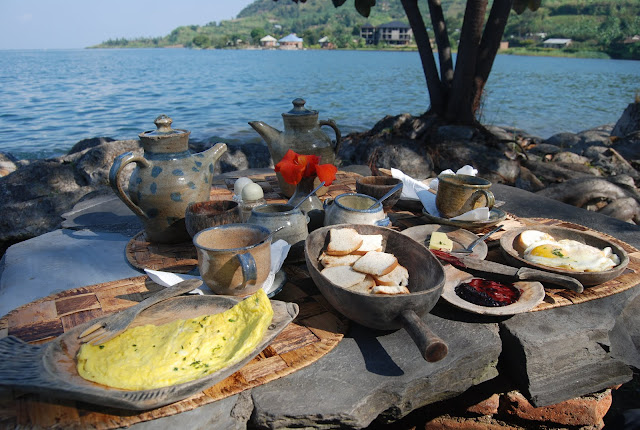Everyone asks if it was worth it to spend $500 for 1 hour with the gorillas...and each time I say, yes! The amazing experience was once in a lifetime, almost indescribable.
We started early in the morning, gathering at the Volcanoes National Park lodge before 7am. There are seven habituated gorilla groups allowed for visitation and we had asked to be given the Sabyinyo group since they were known to be the "easiest" family to reach. They usually hang out on the bottom slopes between Mount Sabyinyo and Mount Gahinga. The group also has the largest silver-back (mature adult male), Guhonda.


After a 30-minute horrendously bumpy ride and a 30-minute walk through farm fields, we arrived at a low stone field that surrounds the base of the volcano mountains. We were unceremoniously thrown over and began our tracking of the gorilla family, which was promised to be about a 3-hour round trip - an hour hike in, an hour to observe the gorillas, and another hour to come back.


Unfortunately, cape buffaloes and elephants were hanging around the mountain this morning and had scared away our Sabyinyo family. It was surprising to hear that buffaloes and elephants (that's right, elephants !!!), live on the mountains, traipsing up and down the steep slopes. After 3 hours of waiting for the trackers to find the gorillas, we learned that instead of hiking through the low-lying bamboo forest we would be CLIMBING up the steep face to the top of the mountain. After a two hour scramble through stinging nettles, dense brush, and slippery mud we made it to the top and found the family resting. We were incredibly close to them since we had to keep a 7 meter distance, though as the gorillas started to move around and babies began to swing around and play we sometimes got much closer. A black-back (young adult male) actually came up and touched one of our group members...just inches in front of me!



After a few minutes of us observing them under the cool forest canopy, the Sabyinyo family started to move down the mountain in search of food. We followed them down into a valley and then up across another hill in search of thistles, one of their favorite foods.



After 6.5 hours, we arrived back at the starting point...the promise of tracking an easy gorilla group clearly did not come to pass. But despite the arduous journey, each moment with the Sabyinyo group was worth it. Their gentleness, power, and beauty caught all of us by surprise. To see the whole album, go here.










































